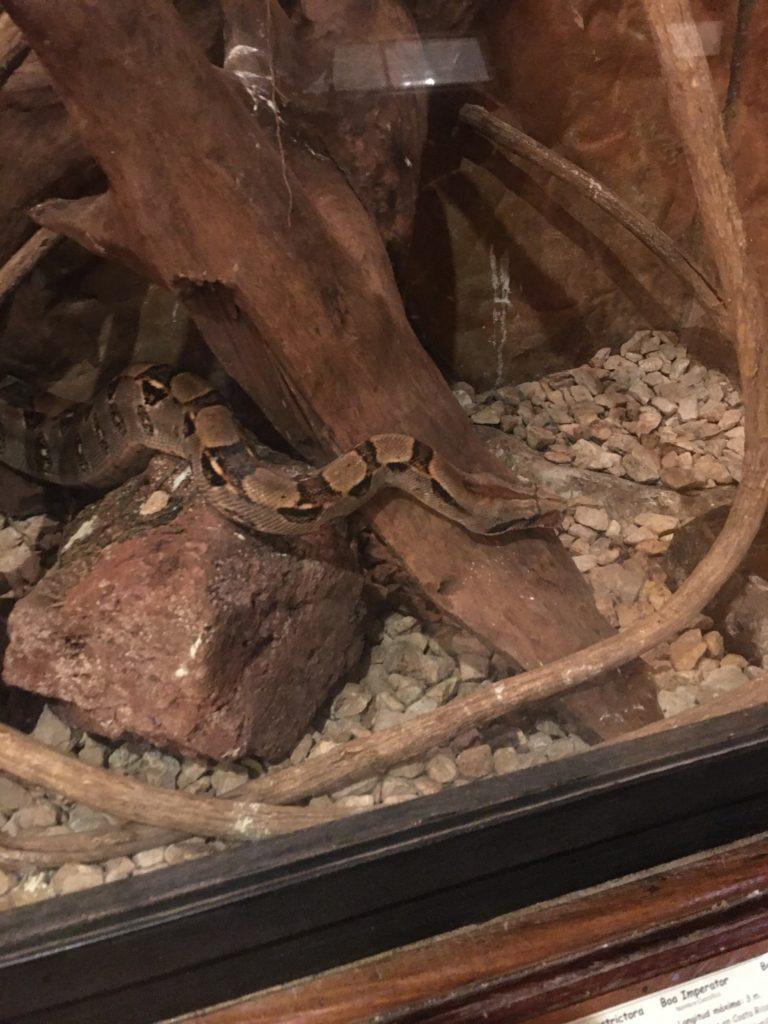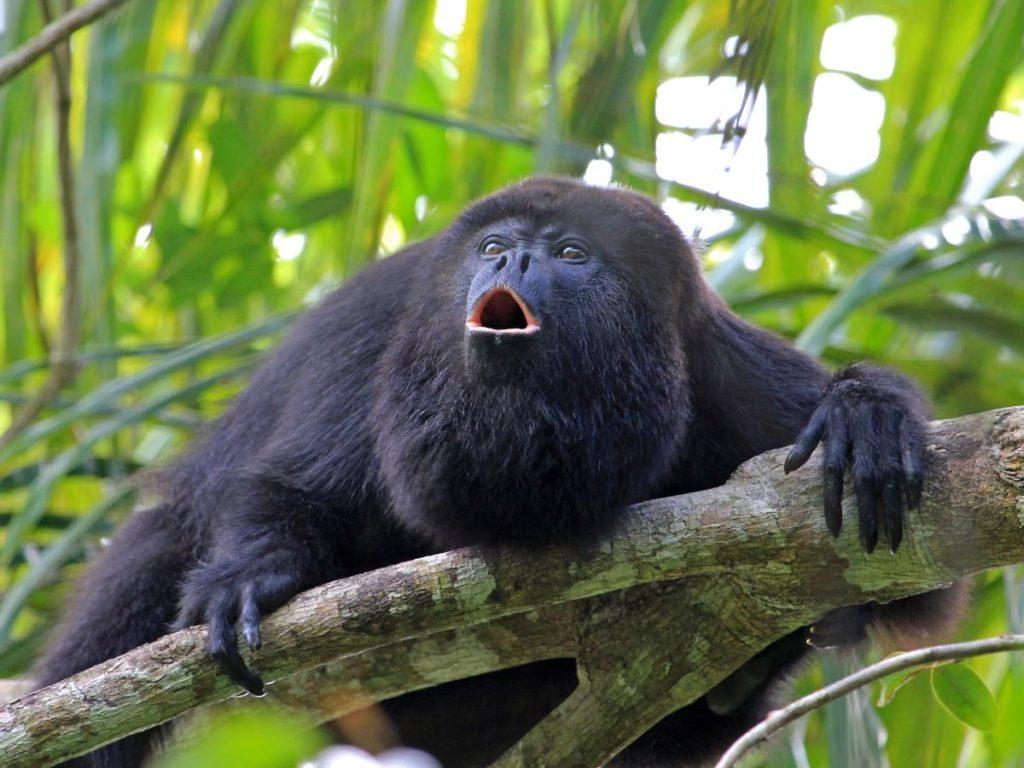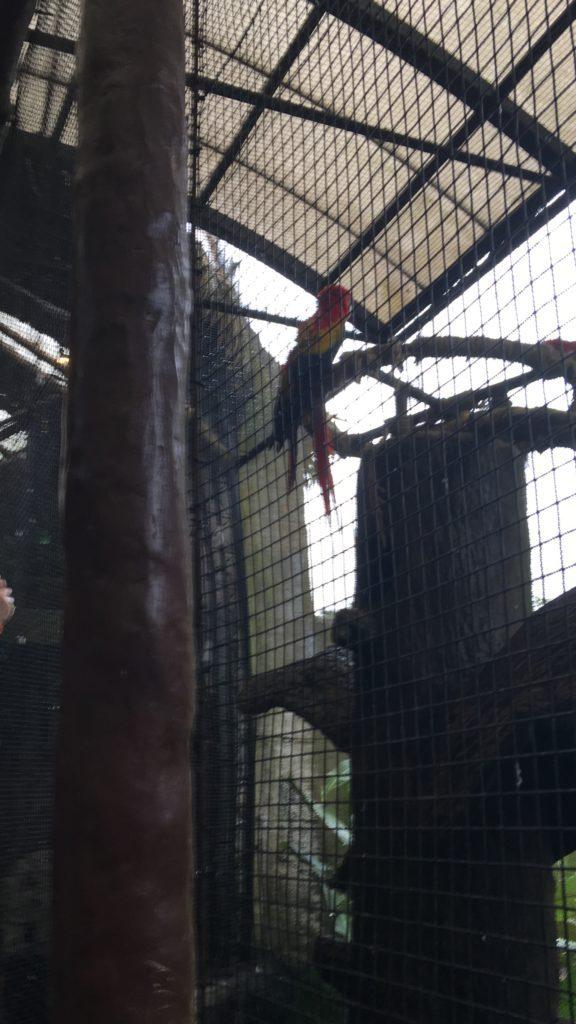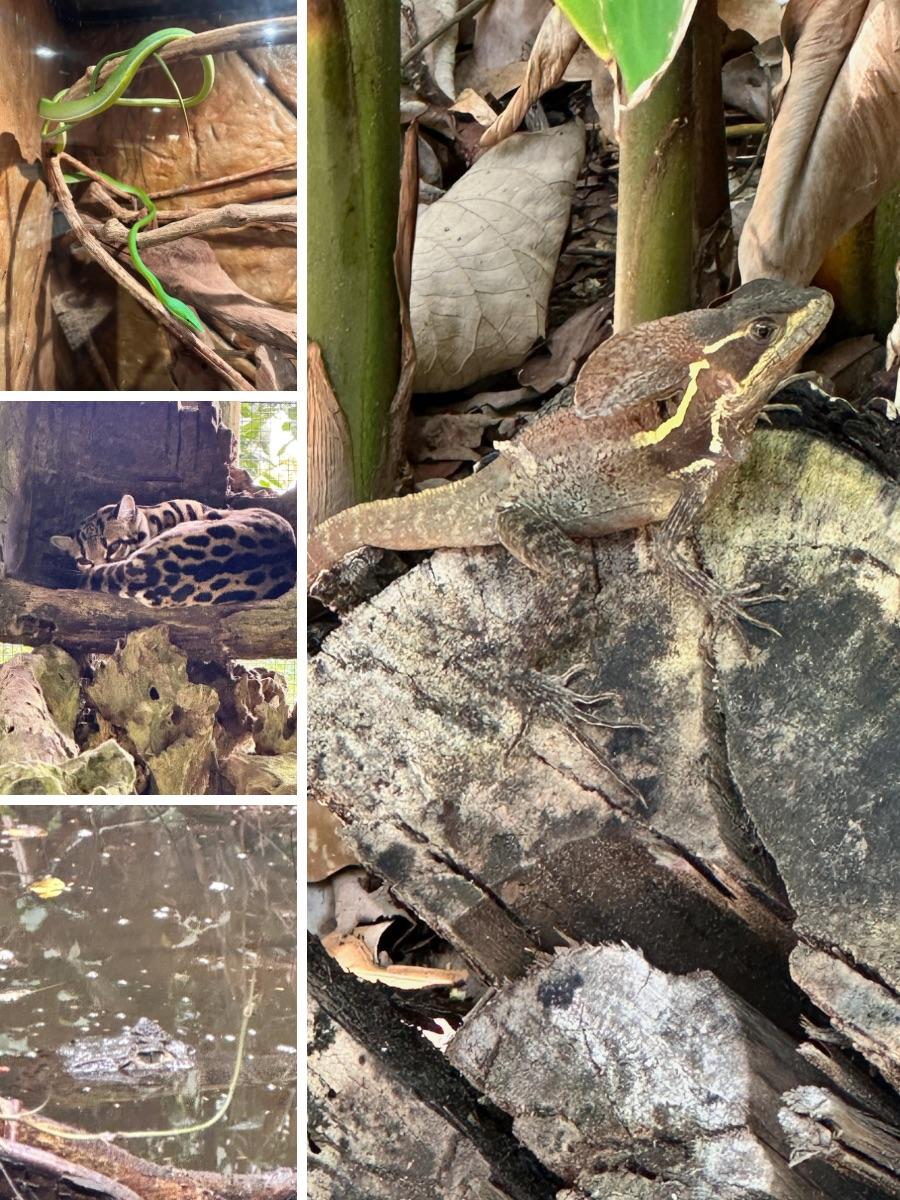Reptiles
Boa constrictor: boa genus

- Scientific name: Boa constrictor
- Length: 2.1 – 3 m (adult female), 1.8 – 2.4 m (adult male)
- Weight: 10 – 15 kg (Female, Adult)
- Domain: Eukaryotic
- Family: Boidae
- Kingdom: Animalia
Are boas very fast?
If the boas are very fast…
Nah They can’t move very fast, only 1.6 kilometers per hour in the open field. But since they don’t have to chase their food, they don’t need to move quickly. Boa constrictors can swim, but most do not spend much time in the water.
What do boas eat?
They eat a wide variety of mammals, small, medium-sized birds and other things such as large lizards, small to moderate-sized birds, opossums, bats, mongooses, rats and squirrels.
How many teeth does the boa constrictor have?
100 teeth The common boa constrictor (Boa constrictor) is a large snake that can reach lengths of up to 4 m (13 ft). Its teeth are sharp and recurved (photo)With four rows of teeth in the upper jaw and two in the lower jaw, it has more than 100 teeth in the dentition.
Where do boas live?
Of all boas, boa constrictors can live in the widest variety of habitats, from sea level to moderate elevations, including deserts, tropical rainforests, open savannas and cultivated fields.
Boas are cold-blooded, so if you have a boa you have to put it in a vivarium with a warm lamp or put the vivarium in the sunlight. What do I do when it’s nighttime and I don’t have a warm lamp? Well, you don’t do anything, it’s like going to the dentist and you’re sleeping and you don’t feel anything.
How long do boas live?
From 25 to 30 years old
Boas measure about 60 cm when they are born and grow continuously throughout their 25 to 30 years of life. The largest boa constrictor ever found was 18 feet long. Hunted for their fine, ornate skin and for sale in the exotic pet trade, some boa constrictors are protected throughout their range.
Is a boa constrictor bite painful?
These snakes are not venomous, but their bites are incredibly painful, so seek medical attention if you are attacked by one. Instead of elongated fangs, boa constrictors have rows of curved teeth of the same size.
How strong is the bite of a boa?
Boas may bite to defend themselves. Small specimens are not usually dangerous to people or domestic animals. However, larger boa constrictors have large, sharp teeth, and their bites can cause severe lacerations. Large animals are also fully capable of eating dogs and cats.
What are some fun facts about boa constrictors?
After a large meal, a boa does not need to eat again for weeks. A boa constrictor grows for its entire life, which can be 20 to 30 years. An adult boa usually weighs more than 45 kilos and is about 4 meters long. Boa constrictors usually live alone.
Do boas lay eggs?
Boas do not lay eggs, but adult females give birth to live young. Hatchlings are attached to a yolk sac and surrounded by a transparent membrane, not a shell, as they develop in their mother’s body. This keeps them at a fairly constant temperature and protects them from predators.
Howler monkeys: Mammals


Howler monkeys are the most widespread primate genus in the Neotropics and are among the largest of the platyrrhines, along with muriquis, spider monkeys and woolly monkeys. Monkeys are native to the forests of Central and South America.
- Scientific name: Alouatta
- Gestation period: Black howler: 186 days, Colombian red howler: 190 days, Yucatán black howler: 186 days, Spotted howler monkey: 185 days
- Domain: Eukaryotic
- Family: Atelidae
- Kingdom: Atelidae Animalia
- Order: Primates Primates
Where can I see howler monkeys in Costa Rica?
You can see howler monkeys in the Osa Peninsula, Manuel Antonio National Park, Guanacaste, Nicoya Peninsula, Monteverde, Arenal, Sarapiqui and the Caribbean coast. Practically everywhere in the country, except in the highest places.
Are howler monkeys friendly?
Although not usually aggressive, brown howler monkeys do not do well in captivity and have a grumpy and unfriendly nature.
Is it possible to eat howler monkeys?
Many people in Central and South America also love to eat howler meat. Howler monkeys are not very resistant to humans, so they are easy prey. People also steal many howlers from their herds for zoos or other people who want them as domestic pets.
Are Costa Rica’s monkeys friendly?
Monkeys are everywhere in Costa Rica, including national parks and local trees. They seem cuddly and cuddly, and may even approach you. Take their picture and admire them, but do not try to pet or feed them. They may feel threatened and react aggressively.
Curious facts
Howlers constitute the largest percentage of primates in the areas they occupy.
Black howler monkeys are one of the few primate species with different coat colors in males and females. Males have black fur, while females are blond.
How fast does a howler monkey go?
A howler monkey can travel at speeds of up to 18 miles per hour.
What makes a howler monkey special?
Howler monkeys are the loudest of all. They call to let others know where their territory is, alerting them to stay away. The calls sound like a loud bark or roar. Following a call from one group of howlers, another group responds.
What foods do howler monkeys eat?
Howlers eat mainly leaves, as well as fruits, nuts and flowers. Howler monkeys obtain almost all the water they need from the food they eat. However, one of the few times they can be seen on the ground is during very dry periods, when they need to find extra water.
How long can a howler monkey live?
In the wild, howlers live between 15 and 20 years. In human care they usually reach 20 years of age.
Do howler monkeys sing?
Black howler monkeys are the earliest risers and usually sing before guests and sometimes even caretakers arrive. The howler monkey’s name is a bit misleading, as its call does not sound like the howl of a wolf.
Who is the predator of the howler monkey?
Although humans are their greatest threat, howler monkeys also have some natural predators. Jaguars, pumas and harpy eagles are their main predators, and they are sometimes hunted by large snakes. When they feel threatened, howler monkeys emit the loud cry that gave them their name.
Birds
Scarlet macaw

- Scientific name: Ara macao
- Conservation status: Least concern (declining population)
- Mass: 1 kg
- Domain: Eukaryotic
- Family: Psittacidae
- Kingdom: Animalia Animalia
- Order: Psittaciformes
What’s a fun fact about scarlet macaws?
Macaws are the largest parrots in the world: the body of the scarlet macaw, from beak to tail, can measure up to 33 cm. This beautiful macaw has a creamy white face, almost featherless, with bright red plumage covering most of the body, wings and long tail.
Is the scarlet macaw rare?
The scarlet macaw is an endangered species, with only an estimated 300-400 surviving in the wild in Guatemala, Mexico and Belize. They are victims of habitat loss, forest fires and illegal wildlife trade, where they are highly sought after for their brilliant plumage.
How long do scarlet macaws live?
Between 40 and 50 years old
Longevity: Typical average longevity is between 40 and 50 years in the wild. In captivity, the scarlet macaw can live up to 75 years (Flower, 1938).
Behavior and reproduction: Scarlet macaws are usually seen in pairs or in a small family that may join a large flock of up to 30 birds.
Food: Nuts, leaves, berries and seeds from the forest make up the majority of the scarlet macaw’s diet. Its strong, hooked beak is perfect for cracking nuts and seeds. Interestingly, the scarlet macaw can eat fruits toxic enough to kill other animals.
Habitat: The scarlet macaw is found from southern Mexico to Peru, as well as in Bolivia, eastern Brazil and the island of Trinidad. They prefer to spend time in tall, deciduous trees in forests and near rivers, usually in large, noisy groups.
The scarlet macaw, also known as Ara Macao, is a large neotropical parrot with red, yellow to bright blue plumage. Its native range is South and Central America. As its name indicates, it is native to the humid evergreen forests of the Neotropics. Although habitat destruction and capture for the pet parrot trade have caused its extinction in some areas, the species is still found in large numbers in other areas. Like its close relative, the blue and yellow macaw, the scarlet macaw is a popular companion bird because of its vibrant plumage.
Threats
The main threats to the scarlet macaw are habitat loss due to rainforest destruction and heavy exploitation for the pet trade. In Costa Rica, these birds, which are often stolen from their nests, can be sold on the black market for US$200. In the United States, hatchlings smuggled into the country can sell for as much as US$4,000. With tourists bringing in nearly $14,000 a year to see birds like the scarlet macaw in the wild, biologists hope that local governments will devote more attention to protecting these magnificent birds.
Why is the scarlet macaw so colorful?
There is no doubt that the scarlet macaw is colorful. Although the scarlet macaw’s plumage may make it stand out in a Kansas field, in its native territory it blends in perfectly.
How much does a scarlet macaw weigh?
An adult scarlet macaw weighs approximately 1 kilogram.
Do scarlet macaws talk?
Like all macaws, the scarlet macaw imitates human speech. They are very sociable animals and can easily be taught words or phrases.
They imitate their environment and the people closest to them and, like children, “parrot” most of the phrases you don’t want them to say. So be careful what you say around your scarlet macaw, or its face could be as red as its plumage.
Are scarlet macaws friendly? Or aggressive?
Captive-bred scarlet macaws are quite affectionate. Hand-feeding them helps to win the affection and trust of your macaw, but keep in mind that they are noisy, boisterous and sociable birds. They can become aggressive, especially if they are not sufficiently stimulated.
In their natural habitat, scarlet macaws are neither friendly nor aggressive, but simply very reserved. You have little to fear from a scarlet macaw.
Are they good pets?
They are intelligent, but they are not meant to be alone. If you have a job or responsibilities that keep you away from home, your scarlet macaw will need a friend to keep it company.
If they feel lonely, they will develop nervous habits such as biting or plucking feathers.
Due to their noisy nature and large stature, they are also not recommended for apartment living. These birds need space, and lots of it! To be a good macaw parent, it is essential to research the bird before deciding to adopt one.
What does a scarlet macaw eat?
Predators and threats
According to animaldiversity.org, scarlet macaws, because of their size, face most predators. They are more vulnerable in the nest.
Hatchlings may be hunted by snakes, monkeys and other small predators. Adult scarlet macaws or fledglings are hunted by large jungle cats or larger birds, such as eagles.
The scarlet macaw’s main predator is humans. Increased deforestation has led to a devastating decline in macaw numbers.
In addition, because these birds are so beautiful, they are at risk from poaching and smuggling. Poachers will kill the adult parents for their precious plumage and then smuggle the chicks into a legitimate market for these adorable animals.
How is the scarlet macaw protected?
They have wings and know how to use them. The scarlet macaw’s first line of defense is simply to fly away.
If for some reason that is not an option, the macaw is equipped with a curved beak and wicked claws. The bird will bite or scratch the predator and use its huge wings to subdue it.
Are scarlet macaws in danger of extinction?
According to fws.gov, there is talk of listing the scarlet macaw as an endangered species.
For the moment, they are not considered endangered, but their population is in decline. There are many factors that can determine the inclusion of a species on the endangered species list, and in the case of the scarlet macaw the most important is deforestation.
The rapid rate at which the Amazon rainforest is disappearing affects the habitat of these territorial birds.
What is the Latin name for the scarlet macaw?
One of the best known facts about the scarlet macaw is its scientific (or Latin) name. The scarlet macaw is known in the scientific community as Ara Macao.
Ara is probably a derivative of the Portuguese word arara, meaning tricolor. This bird is quite famous for its bright, multicolored plumage.
Do scarlet macaws live in groups?
They are usually found in mated pairs or small family groups, but occasionally they can be found roosting in flocks of up to 50 unrelated birds.
Do scarlet macaws mate for life?
Yes. For better or worse, once a scarlet macaw chooses a mate, they are mates for life.
They maintain large territories with perfect nesting sites among the vegetation. These territories are largely due to the nuts and fruits that the macaws eat.
How often do scarlet macaws lay eggs?
A pair of scarlet macaws lays between 1 and 4 small white eggs per year. They are very protective of their eggs and young. The female will protect the nest during the 28-day hatching process.
Both parents care for the hatchlings after hatching. Once the chicks hatch, at 14 days, they are left mostly to their own devices; after all, the best way to learn is by doing.Juvenile scarlet macaws can remain with their family unit for up to 2 years after hatching.
Watch this baby scarlet macaw grow in 65 days.
Where can I see the scarlet macaw?
Unless you are planning a trip to southern Mexico or South America to see these beautiful birds in their natural habitat, the best place to see them is a local zoo. Most zoos have a large parrot population, and the striking scarlet macaw attracts many visitors. The St. Louis, Indianapolis and San Diego zoos are known for their flocks of macaws, especially scarlet macaws.
The habitats created for these avian wonders are almost identical to their natural habitats. Being sociable, it is not uncommon for these curious creatures to return the visit.
Scarlet macaws are one of the most spectacular avian species in the world. Intelligent, sociable and brightly colored, these birds stand out among their kind. If properly cared for, they become a very entertaining and valued member of your family unit.
Your next visit to the zoo should include a stroll through the aviary to catch a glimpse of these majestic birds. They are also prey to some of the darker parts of humanity and must be protected all the more for it.
References: Encyclopedia of life







Leave a reply